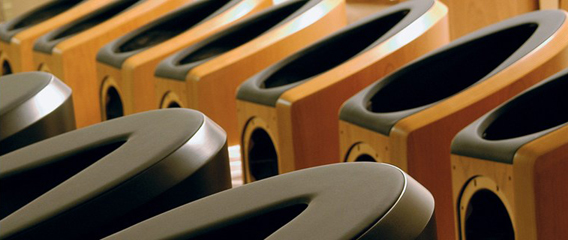For the first time the extraordinary and time-consuming process of creating a Bowers & Wilkins 800 Series Diamond speaker has been captured on film in its entirety. From the formation of the outer shell of the cabinet, through the painstaking painting and polishing process, right up to the final test that makes sure the loudspeaker meets B&W’s – and our customers’ – exacting standards, each stage is carefully monitored, and consistently applied. It is truly an amazing process and will give you a renewed sense of pride in the quality of workmanship that goes into our products.
Bowers and Wilkins, or B&W, takes its name from two men who met in the British military during World War II and opened an electronics shop after the war. Wilkins’ son Paul still runs the shop. B&W Loudspeakers launched its first model from the back of the shop in 1966. The company then established its own R&D and production facilities, and the famous 801 arrived in 1979.
After the 801 became a worldwide audiophile hit, B&W built several iterations of the 800 Series. The 800 Matrix Series morphed into different shapes and greatly expanded the audiophile fan base. The Nautilus Series was famous for the snail-shaped enclosure of its still-surviving flagship, which banished all straight lines and flat surfaces. The Nautilus 800 followed, reviving some flat surfaces for the sake of practicality. Its successor is the current 800 Diamond Series.
Today, the 801’s progeny are the recording monitors of choice at Abbey Road, Skywalker Sound, and Sony Music NYC. B&W’s innovations include the use of Kevlar fibers in woofer cones, tweeters in separate tapered enclosures, the golf-ball dimpling of the flares on their ports, and the synthetic diamond-domed tweeter—all of which enrich the 800 Diamond Series speakers.
Source: HDLiving.com and Bowers-Wilkins.com

